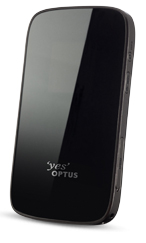4G and LTE: everything you need to know
Curious about 4G in Australia? techradar explains all
It was only in early September of 2012 that Optus officially opened its LTE network for business, despite months of trials earlier in the year.
The footprint of Optus' 4G network at launch was significantly smaller than Telstra's, only available in Sydney, Perth and Newcastle. Two weeks later, Optus added Melbourne to that list, before later expanding to Brisbane, Adelaide and the Gold Coast.
Since then, the network has continued to expand, with Optus reaching 90% the population in April 2015.
Optus shifted slightly in its LTE network technology last year with the launch of 4G Plus, which uses TD-LTE and promises theoretical speeds of over 200Mbps and practical download speeds between 25Mbps and 87Mbps, though Optus did reach 500Mbps during a trial.
While Telstra and Vodafone have FD-LTE networks, which uses two separate frequency channels for uploads and downloads, TD-LTE is a variation in that it uses the same frequency for uploads and downloads, but does each at separate times.
Optus plans to continue to expand both its FD-LTE and TD-LTE network. It has been trialling using the TD 2600MHz band in city centres, while also bringing online its allotment of the 700MHz spectrum band early in 2015.
Optus hit a milestone in January, with more than 1,100 metropolitan and regional sites supporting the new 4G Plus 700 MHz spectrum. And in March Optus aggregated four 20MHz channels to achieve download speeds of 480Mbps on a prototype consumer device.
Get daily insight, inspiration and deals in your inbox
Sign up for breaking news, reviews, opinion, top tech deals, and more.
2015 has been a bumper year for Optus, especially as it has rolled out its 4G Plus network to a massive array of regional hubs across the country.
Using Optus 4G
Optus has been able to boast a big advantage over its competitors with the extra spectrum it acquired as part of Vividwireless.
The acquisition has enabled Optus to build it's 4G Plus TD-LTE network with the 2.3GHz spectrum alongside the 1800Mhz spectrum, but this does require dual-band devices.

In September 2014, Optus also turned on its LTE Advanced carrier aggregation system that uses multiple 2.3MHz TDD channels in selected areas of Sydney, Melbourne, Brisbane Adelaide and Canberra. Through devices that support multiple TDD channels are few and far between.
Phones compatible with Optus's regular 4G LTE Advanced network include all the latest releases like the iPhone 6S and 6S Plus, Samsung Galaxy S6 and S6 Edge, the HTC One M9 and Microsoft Lumia 640. A number of last generation phones including the Samsung range - Galaxy S5, Galaxy S4, Galaxy Note 3 - as well as the HTC One M8 and LG G2 are also able to utilise a large portion of the Optus 4G Plus network.
For FD-LTE support, you of course have the the popular iPhone 5S and Sony Xperia Z2. You can check out our list of the best Optus handsets.
Other than that, it's just a USB or wireless dongle for connecting your computing devices to the network, and the telco does have a range of dual-band hotspots available.